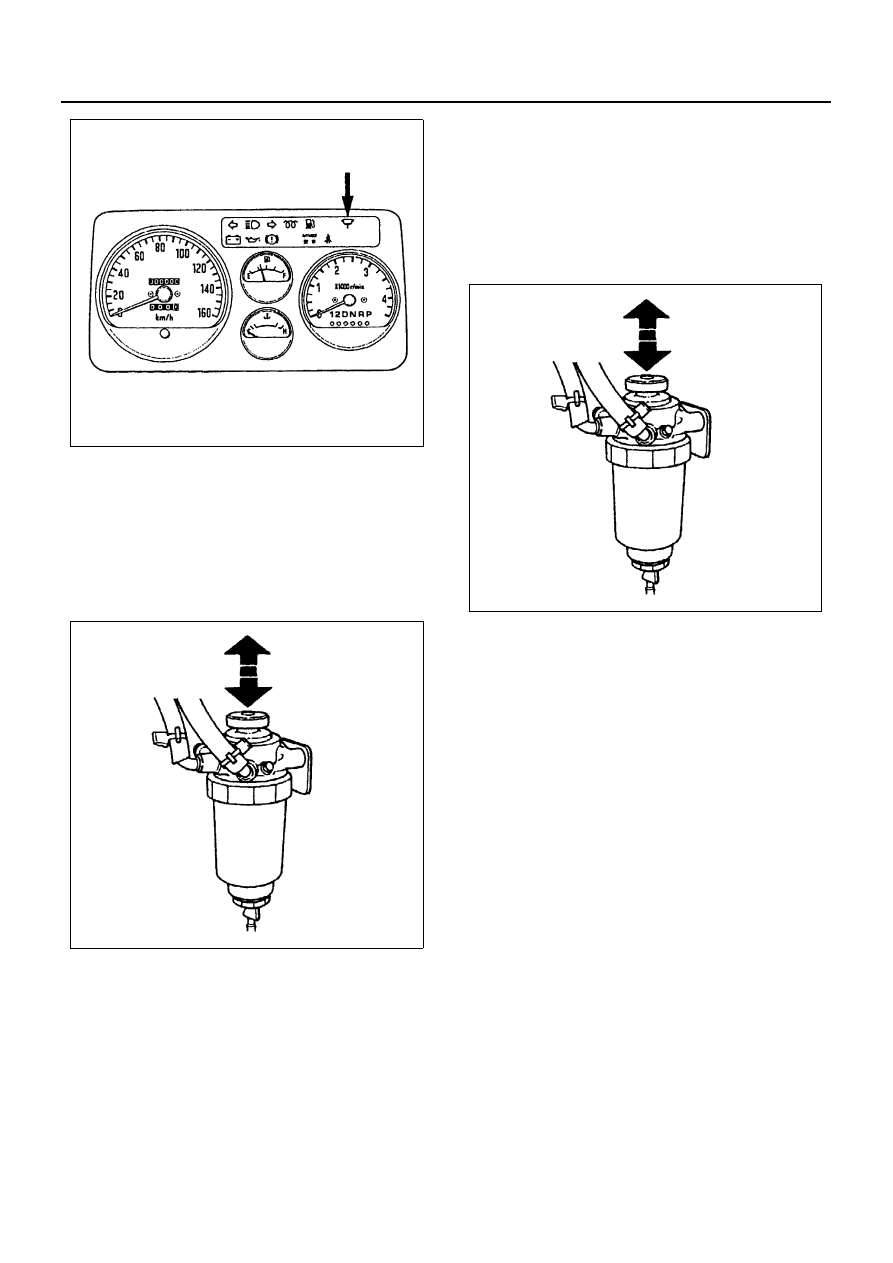Isuzu N-Series. Manual - part 555

SERVICE INFORMATION 00-35
1. Find a safe place to park the vehicle.
2. Open the engine hood and place a container (Ap-
proximately 0.2 liter capacity) at the end of the vinyl
hose beneath the drain plug on the separator.
3. Loosen the drain plug by turning it counterclock-
wise (Approximately 5 turns) and operate the prim-
ing pump up and down about 10 times until water
is drained approximately 0.1 liter.
4. After draining, securely tighten the drain plug by
turning it clockwise and operate the priming pump
manually up and down several times.
5. After starting the engine, check to see that there is
no fuel leak from the drain plug. Also check to see
that the fuel filter water indicator light has turned
off.
If water separator requires frequent draining, have
the fuel tank drained for removal of water at your
Isuzu Dealer.
Air Bleeding
1. Loosen the bleeding plug on the injection pump
overflow valve.
2. Operate the priming pump until fuel mixed with
foam flows from the bleeding plug.
3. Tighten the bleeding plug.
4. Operate the priming pump several times and check
for fuel leakage.
Injection Pump Air Bleeding (4JH1-TC only)
Injection pump air bleeding is required to start the en-
gine when —
• The fuel supply has been exhausted (running out
of gas).
• The fuel filter has been replaced.
• The injection pump has been replaced.
Caution:
If the injection pump has been replaced, the air bleeding
procedure will require more time and effort (this is be-
cause there is no fuel in the pump).
1. Loosen the air bleed nut on the priming pump
plunger (at the top of the fuel filter).
2. Move the priming pump plunger up-and-down until
strong resistance is felt (about 15 cycles).
3. Stop pumping and tighten the air bleed nut.
4. Wait for 1 minute.
5. Loosen the air bleed nut on the priming pump
plunger again.
6. Move the priming pump plunger up-and-down until
strong resistance if felt (about 10 cycles).
7. Stop pumping and tighten the air bleed nut.
8. Wait for 1 minute.
9. Loosen the air bleed nut on the priming pump
plunger again.
10. Move the priming pump plunger up-and-down until
strong resistance is felt (about 5 cycles).
11. Stop pumping and tighten the air bleed nut.
N6A3013E
N6A3012E
N6A3012E